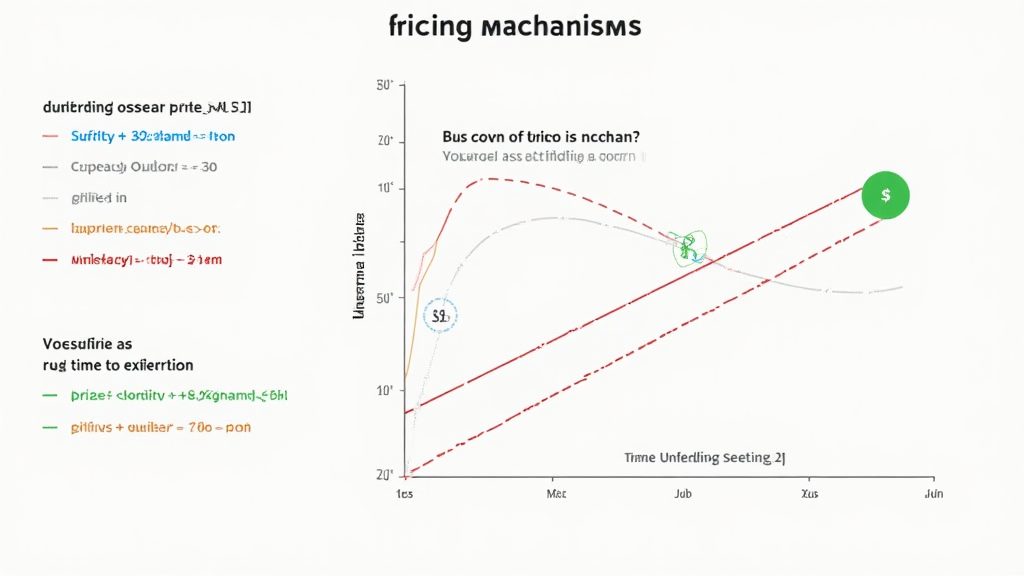How to Set Stop Loss on Crypto Trading: A Comprehensive Guide
How to Set Stop Loss on Crypto Trading: A Comprehensive Guide
With millions in losses due to volatile markets, understanding how to set a stop loss on your cryptocurrency investments is critical. In 2024 alone, around $4.1 billion was lost to unfortunate price drops. As the cryptocurrency market continues to evolve, so too must our strategies to protect our investments. In this guide, we’ll walk you through the importance of stop losses and how to effectively implement them to safeguard your assets.
Understanding the Basics of Stop Losses
Before diving into the intricacies of setting a stop loss, let’s break down what it means:
- Stop Loss Definition: A stop loss is an order placed with a broker to buy or sell once a stock reaches a certain price. It is a risk management tool that can protect your investments.
- Why Use Stop Losses? They can minimize losses and provide you with peace of mind in volatile markets.
Setting a stop loss is akin to adding a safety net to your tightrope walking act. Just as a net protects the performer from a fall, a stop loss protects your investments from sudden market dips.

Types of Stop Loss Strategies
There are several types of stop losses you can utilize in crypto trading:
- Fixed Stop Loss: This is set at a specific price point. For instance, if you buy a cryptocurrency at $10 and wish to limit losses to 20%, you set a stop loss at $8.
- Trailing Stop Loss: This type follows the market price up, maintaining a set distance from the highest price since you bought. It allows for profit generation while still protecting against downward trends.
- Percentage-Based Stop Loss: This sets a loss based on a percentage of the price paid. For instance, a 10% stop loss on a $100 purchase means an order will execute if the price drops to $90.
When considering these options, think about what suits your trading style best — it’s essential to find a method that fits your risk tolerance and investment strategy.
The Psychology Behind Stop Losses
While technical and strategic understanding are critical, the psychological aspect of trading influences how we manage stop losses:
- Fear of Missing Out (FOMO): Many traders hold onto their assets despite warnings due to the understanding that price could rebound, resulting in losses.
- Emotional Decision-Making: Allowing emotions to dictate when to sell can heighten losses. A predefined stop loss removes this emotional burden.
Realizing how psychology impacts decisions can guide you toward more disciplined investments. Just as successful athletes depend on rigorous training and preparations rather than on whims, successful traders rely on solid strategies backed by predetermined rules.
Practical Steps to Set a Stop Loss
Now, let’s outline a practical approach to setting your stop loss effectively:
- Choose Your Trading Platform: Most major crypto exchanges, such as Binance or Coinbase, offer stop loss functionalities.
- Select Your Cryptocurrency: Identify the cryptocurrency you want to set a stop loss on.
- Determine Your Price Point: Decide where your stop loss will be based on your risk tolerance and market trends.
- Place the Order: Navigate to your exchange’s trading interface and input your stop loss parameters.
- Monitor the Market: Keep an eye on the market trends and adjust your stop loss as necessary to reflect price movements.
Setting a stop loss is like preparing a plan B for a road trip; it’s your insurance against unexpected detours. As you monitor your active trades, adapt your strategies based on the evolving market landscape.
Common Mistakes to Avoid When Setting Stop Losses
Even seasoned traders may stumble, so here are common pitfalls to avoid:
- Setting Too Tight of a Stop Loss: If set too closely to the market price, minor fluctuations may trigger a sale, resulting in unnecessary losses.
- Ignoring Market Conditions: Understanding the current market trend is crucial. Stop loss strategies should consider volatility levels.
- Not Adjusting Stop Losses: Failing to modify your stop loss as prices change can lead to potential losses. Stay proactive!
Consider these mistakes as learning opportunities. Just like athletes reflect upon their performance during training to improve the next day, applying lessons from your trading history can lead to enhanced future decision-making.
Analyzing the Vietnamese Crypto Market
Vietnam has seen a surge in cryptocurrency users, with a growth rate of approximately 30% in 2023. The increasing adoption reflects the need for robust trading strategies, including effective use of stop losses. Local traders are keen on protecting their investments while navigating this evolving landscape.
- Rapid User Growth: The number of crypto users in Vietnam has skyrocketed; understanding stop loss strategies is more crucial than ever.
- Educational Initiatives: Local platforms are increasingly offering resources to help traders understand the importance of stop losses and effective strategies.
This vibrant market environment illustrates the necessity for trader education on risk management techniques, underscoring the role of stop losses in maintaining investment security.
Conclusion: The Importance of Stop Loss in Crypto Trading
In the unpredictable world of cryptocurrency, employing a stop loss can mean the difference between measured risk management and devastating losses. By understanding and applying the different types of stop loss orders, you’ll significantly improve your investment strategy.
As the crypto market continues to evolve, staying informed about best practices, including stop losses, will remain essential. The integration of technology and trading will forge new paths in asset management, making knowledgeable strategies such as stop loss even more critical.
For ongoing updates and insights, visit techcryptodigest to enhance your crypto trading journey.
Author: Dr. Mark Johnson, a seasoned blockchain analyst with over 15 published papers in cryptocurrency risk management and a leader in auditing several high-profile blockchain projects.





